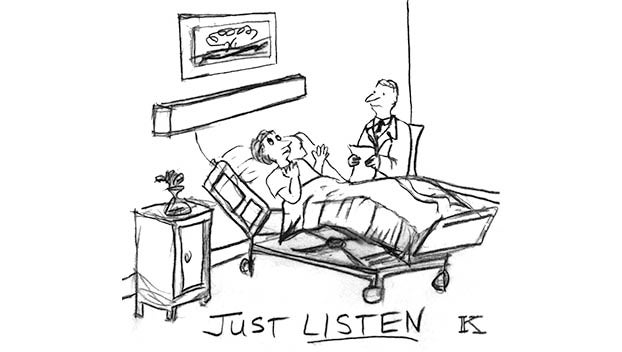Dr. Witherspoon: Perilous Porch
Published 2:45 pm Wednesday, April 17, 2024
|
Getting your Trinity Audio player ready...
|
A farmer in his mid-fifties had been operating his tractor for half an hour when he suddenly developed searing pain in his chest and back. It was quickly followed by shortness of breath and profuse sweating. He was rushed by ambulance to a nearby community hospital.
The patient presented to the ED with hypotension (low blood pressure), diffuse sweating, and agonizing chest and back pain. His EKG, cardiac enzymes (to rule out a heart attack), and chest x-ray were all unremarkable. There was a slight suggestion of mediastinal widening on the chest x-ray, but that was a subjective finding. The chest x-ray could have been interpreted as normal.
The ER doctor was convinced the man had suffered an acute aortic dissection and promptly obtained a CT scan with contrast, but it was normal. The on-call vascular surgeon was notified.
Interesting. The patient’s dire condition could not be explained by any of the tests, yet he appeared to remain in extremis. The vascular surgeon then did somewhat of a novel thing.
He sat down at the patient’s bedside and meticulously obtained a very detailed history.
The gentleman had been in apparent good health with no prior bouts of chest pain, shortness of breath, asthma, pneumonia, gastritis, hypertension, diabetes, smoking, exertional intolerance, or exposure to unfamiliar chemicals. He had eaten nothing out of the ordinary. There was absolutely nothing in his background that would predispose him to an underlying illness.
Okay. The vascular surgeon took a different tack and decided to concentrate on the events leading up to this morning’s sudden illness. He carefully retraced the patient’s activities.
The patient awoke and had his usual breakfast. He then walked out onto the porch, put on his shirt and coveralls, and got on his tractor. Thirty to forty-five minutes later, he was stricken.
His shirt and coveralls were on the porch?
Yes, it was his custom to keep them there to confine the dust and grass outside the house.
Hmm. Had the patient ever noticed the presence of a certain distinctive arachnid on his porch?
The gentleman thought about it. Why, yes, he had, as a matter of fact.
He was asked where he might have seen it.
It was sighted in the eaves up in the corner.
He was asked where he hung his shirt and coveralls.
They were hung on a hook in that same corner.
When he put on his shirt and coveralls this morning, did he feel anything like a pin prick or what might have been an insect bite?
Come to think of it, he did, as a matter of fact. He thought nothing of it, believing there had been a twig or splinter, perhaps a fragment of weed or grass in his clothing. It was insignificant, really.
Might the doctor see that spot?
There was a dot on the man’s arm with a small area of surrounding redness.
The vascular surgeon ordered an intravenous dose of methocarbomal, a muscle relaxer. Within thirty minutes, the patient was asymptomatic. He was kept overnight for observation and discharged the next day.
The diagnosis was Black Widow Spider bite.
DR. WITHERSPOON SAYS:
Excellent! That was a mighty fine bit of detective work, doctor. Well done.
The Black Widow’s venom is a neurotoxin that causes intense muscle spasms. Rarely fatal, it can mimic some serious conditions, as we have seen here. Heart attack and aortic dissection are the first two that come to mind.
The amazing thing is, the vascular surgeon not only thought about the correct diagnosis but was also familiar with its symptoms and knew the treatment. He didn’t have to look anything up. I don’t know too many doctors that can spout off the signs, symptoms, and treatment of a Black Widow Spider bite, just like that! I must say, this old fellow’s quite impressed.
And, once again, as we have seen over and over, a good history can be invaluable. No getting’ around it. Of all the multi-million-dollar testing apparatuses available nowadays, not a one of ‘em would have revealed this gentleman’s diagnosis. Volumes can be written about the medical gaffes incurred by doctors who cannot or will not listen carefully.
A good history was all this patient needed and, of course, it helped that the doctor who took it knew what he was listening to.
Well done, my vascular friend. Once again, we are all of us taught another valuable lesson.
J. M. MacDavid M.D. also known locally as Dr. John Kona can be contacted at WitherspoonInstitute23@gmail.com.



